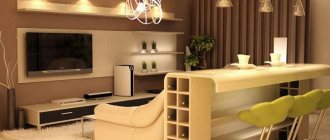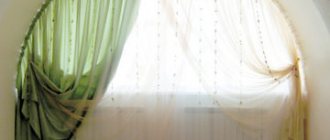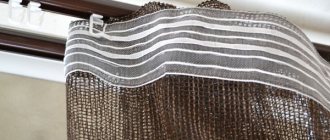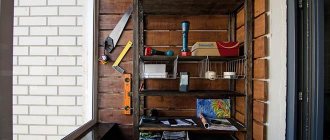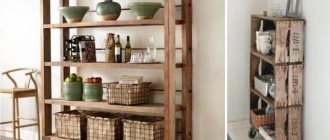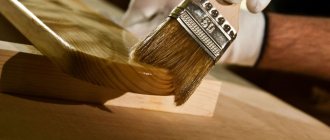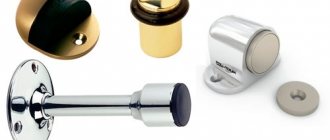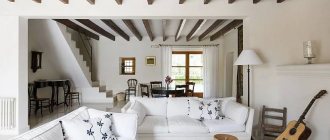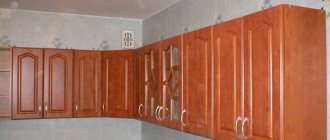Comfort consists of many components, among which is the flawless functioning of properly selected equipment in all rooms, including the bathroom. Modern plumbing, a comfortable bath, exquisite wall and floor decoration, bright lighting - that's not all. Among the minor details, there are some that you simply cannot do without. For example, a curtain rod for a bathroom - it is on this that the curtain is held, protecting the floor and furnishings from splashing.
Let's talk about how to choose and install the cornice above the bathtub.
Advantages
The main advantage of such devices will be the ability to be installed in openings of different sizes. It is not always possible to choose a crossbar that fits perfectly in size, and in this case, a telescopic cornice will be the ideal solution.
In addition, to install other types of similar devices, you will have to use a variety of tools, and not everyone can do this. For example, not all women can boast of the skills to work with a drill or screwdriver, but you need to install a crossbar. With a sliding model, such a problem will not arise - even a child can install it.
Another advantage of this solution will be the absence of the need to drill the wall or screw screws into it - the sliding cornice for the bathroom is installed according to the principle of a spacer and no action on the wall is required. This means that after dismantling the crossbar, no traces of its installation will remain - you don’t have to worry about the safety of the wall covering.
The color scheme can be different, which will allow you to choose an option for a wide variety of interiors. However, most choose either plain white or other light colors. Often the choice is made of shiny steel-colored models.
It would be a mistake to think that a telescopic curtain rod for a bathroom can only be in the form of an ordinary pipe. There are many different modifications of this device.
You can even find two-row modifications on sale that look especially beautiful. However, such devices weigh much more and require some skill when attaching. You will have to fix not one, but two tubes at once, which often causes difficulties.
Curtain rod mounts
The installation of the selected variant of the rod has a number of features, both in terms of the technological work carried out and in terms of the layout of the fastening units themselves.
The simplest in terms of installation and the easiest to use available tools is a telescopic rod . This is the most common type of rods that have locking plates in the middle. Installation is carried out by installing plastic plugs at the ends of the rod and securing the rod itself by simultaneously applying maximum force to the opposite walls. When installing such a structure, you need to pay attention to how the curtain will be suspended; if solid rings are used for this, then they must be put on the rod before installation.
Telescopic rods
Plastic fasteners-plugs used in a curtain rod of this type can be pre-installed using silicone sealant or with a self-tapping screw. The use of metal fasteners will require marking and using a hammer drill to make a hole in the wall.
Individual rods can be installed using the spacer method and using a screw element . A screw thread assembly is pre-installed inside the rod. The movable screws are installed in plastic spacers on the walls and, using a wrench, are unscrewed until they give the rod the required rigidity. Later the screws are covered with decorative covers. A special feature of this spacer installation method is the need to monitor the tension so that excessive tension does not lead to deformation of the rod profile, especially those made of plastic.
A rod installed using anchor bolts in addition to the attachment points on the walls, may have additional installation locations for supporting rods. For wall mounting, and these are mainly straight rods and arc ones, they are installed on special fastening units on the walls. The location of the wall fastening element is preliminarily marked on the wall, then a hole is made for an anchor bolt or plastic dowel. At the final stage, the rod itself is installed in the fastening element and clamped with screws.
Rod with anchor bolts
Additional support points in arc, corner or hanging rod models are usually attached to the ceiling, although it is possible to install them to a support placed on the floor. Such an additional element is connected to the rod by means of an additional clamp that tightly encircles the rod. For bathrooms with a plasterboard ceiling structure, it is important to correctly calculate the installation locations of metal profiles even before the installation of the ceiling support element, and to secure the installation of electrical wiring by preventing the conductors from coming into contact with the metal parts of the rod.
For structures intended to be installed above a free-standing bathroom, the ceiling mounting option can be implemented either in the form of a rigidly fixed model or suspended on flexible elements - for example, on decorative chains or rods.
Flaws
Of the disadvantages of this solution, only a few points are worth noting. The most important thing: a telescopic curtain rod can only be installed in a bathroom that has two walls opposite each other. If the bathtub is located in the corner of the room, using such a solution will not work.
Heavy curtains made from massive materials also cannot be used - the crossbar cannot withstand the heavy weight and slides off. In addition, if you make inaccuracies during installation, the pipe will not be secured correctly and sooner or later it will slip off. You need to be very careful about the accuracy of the installation.
Choice of material
Bathroom curtains are made from soft or hard materials. Which option to choose is a matter of taste. Some people like glass more, others like it when a soft curtain hangs, gathered into folds.
A compromise option would be a combined cornice, in which the supporting rod is made of metal and the ends are made of plastic.
It is also important to pay attention to the compatibility of the curtain and the interior. For example, a simple polyethylene curtain is not suitable for a Provence-style room. It will simply ruin the overall impression. It is better to give preference to textiles in pastel colors and floral prints.
A white curtain will suit any bathroom.
In a loft or minimalist style bathroom, the right solution would be a glass option. It does not attract much attention and does not spoil the appearance with inappropriate ornamentation. In the eco style, which is very relevant today, you can use various options. The main thing is that the element fits harmoniously into the environment.
The classic style is perfectly complemented by fabric curtains, which serve as a kind of imitation of luxurious, heavy fabrics. When not using the bathroom, the curtain can be beautifully collected and tied up. Art Nouveau is characterized by a variety of colors and lines. Plastic models are ideal. They can take all sorts of forms. This is why designers love them so much.
The curtain rod is suitable for any material.
A polyethylene curtain is quite appropriate in a room where there is no consistent style. Curtains in interesting colors can add some color. In addition, such curtains are cheap and can be changed frequently. Let's take a closer look at the most popular types of curtains.
Glass
Glass curtains are made from high-quality tempered glass. The surface is treated with mixtures that prevent the formation of water stains.
The glass curtain looks interesting.
The advantages of glass curtains are obvious:
- do not lose color, do not fade;
- a wide choice - matte or glossy, with or without patterns, various colors, opaque and transparent;
- easy to care for;
- differ in durability.
The disadvantages are that they are heavy and cost more than other types. A bathtub with a glass curtain is associated with a stylish, expensive interior. Sometimes glass screens come with furniture. An interesting option is in the form of a coupe.
Polymer
Polymer curtains have a number of disadvantages, but they are still often purchased for a number of reasons.
- Inexpensive price. This curtain costs less than a similar one made of glass.
- Comfortable and good splash protection.
- Versatility. You can use the curtain not only for its intended purpose, but, for example, as a door for a cabinet in a damp room.
- Easy to clean. Weekly cleaning allows you to maintain a good appearance for a long time and prevents the formation of fungus.
- Variety in configuration and color.
Nowadays, telescopic curtain rods for curtains have become widespread.
Among the disadvantages: they are inferior to glass in terms of environmental characteristics, sometimes interfere with free access to the mixer, and visually reduce the area of the room.
Textile
Textile bathroom curtains are made of cotton, which is then treated with a special compound that protects the material from vapors and water. These fabrics are safe.
The colors of the curtains are also varied and can satisfy any request, even the most biased. A marine theme, images of natural objects, all kinds of prints are just part of what can be on a curtain.
Textile curtains look interesting.
Advantages of textile curtains:
- waterproof;
- safety, environmental friendliness;
- large selection of sizes and colors;
- washable in a washing machine.
Materials
Sliding bars can be different not only in length or color. They can be made from different materials:
Metal options look better, but they also weigh more.
If the walls in your bathroom are made of plasterboard, it is better to choose the plastic option. It does not require such strong fixation and puts less pressure on the walls. The risk of damaging the surface is reduced.
For cases where the walls are strong enough, you can choose metal structures. They are attached using the same principle as plastic ones, but require stronger pressure to secure them.
Ceiling cornice and its installation
Recently, they have often begun to use the ceiling installation of cornices in the bathroom. It is convenient, ergonomic, and the good thing is that the curtain covers the entire space from floor to ceiling.
Installation of this version of the cornice is quite simple. To do this, you need to insert the screws from the hardware kit into special sockets and attach the cornice directly to the ceiling.
Important! This design is good for tall or built-in shower heads, or for situations where you don't want to drill into the tiles.
Installation
Before installing the telescopic curtain rod for the bathroom, it needs to be adjusted in length.
To do this, you need to unscrew or, conversely, screw in the moving part of the device. The resulting length should be two centimeters greater than the dimensions of the opening in which the installation is made. To fix the cornice, you need to compress the spring by pressing on the smaller pipe and place the device between two vertical walls, then release the tube and the ejector spring will securely fix the crossbar.
Important: some models of such devices do not have a spring.
Fixation is carried out by unscrewing the part moving along the internal thread. When the desired size is reached, the pipe is clamped in the selected position with a special screw-on clamp. Such models are less reliable in operation and are practically no longer available for sale.
Before fastening, it would be useful to make markings using a tape measure and a building level.
Using a tape measure, you should not only mark two points for fixation, but also measure the length of the opening at the attachment point. This will allow you to adjust the crossbar length with sufficient accuracy. A level will be needed to check the horizontal position of the cornice.
"load...
When purchasing a curtain rod for a bathroom, most people first think about the attractiveness and ease of installation of the structure. The telescopic bathroom rod perfectly meets these requirements.
It's an attractive and fairly durable system that anyone can install and only take a few minutes to complete. Made from high-quality modern materials, the fastening system will not create much trouble during operation and will not require special care. True, in addition to many positive qualities, the barbell also has a number of negative properties.
Installation of curtain rods of various configurations
Almost all models are mounted in the same way - using flanges mounted on the walls. However, there are nuances that distinguish the installation of straight and angular, flexible and rigid, telescopic and solid products. If you wish, you can make a convenient device yourself from scrap materials.
Let's look at the features of installation of various types, but first a few words about the tool.
You will need marking material (pencil, tape measure, level, square), a construction knife, a hammer drill with 5 mm drills (for concrete or tiles), a screwdriver, fasteners (dowels, screws or screws can come with the cornice). When selecting fasteners, be sure to take into account the material of the walls and ceiling.
Installation of telescopic structure
Cheapness is not yet a reason to purchase this unreliable model for the bathroom if you have children in your family. The mechanism for fastening the telescopic device is such that it can easily support even a wet curtain, but it is unlikely to be able to support the weight of a small child if he slips and grabs the curtain.
A telescope rod is equipment that resembles a stand or small shelf that cannot withstand additional pressure.
The most inexpensive sliding cornice made of plastic costs 230-250 rubles, a telescopic rod with a metal guide pipe costs 550 rubles and more
If there is nothing to fear, and you nevertheless purchased a telescopic device, then you can immediately install it without prior preparation. The only tool you will need is marking material; no drilling of walls is required. The sequence of actions is as follows:
- Determine the mounting location. Make sure that it is not too low, but maintain a distance from the ceiling (15-20 cm). You can check by looking at the curtain - its edge should fall freely into the bathtub, and not be located above its edge.
- Mark the mounting location with a pencil or washable marker. It is better to use a level and carefully ensure that the cornice is parallel to the edge of the bathtub.
- Unwrap the packaging and check how the mechanism functions.
- Read the short instructions that come with the product.
- Extend the cornice to the required length, adding a little more (0.5-1 cm).
- Use curtain rings or hooks if they are permanent.
- Install in a pre-marked place, check the reliability of installation.
As you can see, installation is easy and takes only a few minutes of time.
When choosing one model or another, make sure it matches other bathroom accessories. Silver, chrome and nickel plated products are popular, as they go well with plumbing equipment
Features of installing a rod with flanges
Prepare a pencil with a tape measure to accurately mark the mounting location, a hammer drill and a screwdriver. As fastening materials we will use self-tapping screws and dowels, which are supplied in the kit (if not available, you need to take care of purchasing them in advance). Sometimes the screws are tightened with a special hexagon that comes with them. On the wall we mark two points for attaching the flanges. The distance between them is the length of the rod.
We calculate the height above the edge of the bathtub in the following way: subtract 20 cm from the length of the curtain (the length of the curtain will be lowered into the bathtub).
We take the first metal flange and apply it with the center to the marked place. They usually have a round shape and 3 holes for screws
Place dots in the holes with a pencil to indicate drilling locations. We remove the flange and use a hammer drill to make three holes at the marked points. We insert the dowels, reattach the flange and screw it with self-tapping screws. We repeat the same thing on the other side.
Before installing the rod, we put reflectors on it - metal round strips that cover the working part of the flange. We insert both ends of the tube into the holders and fix them with special clamping bolts
We move the reflectors tightly to the wall - the work is finished. Usually, in the instructions, in addition to the order of work, there are some explanations for the installation of products of various types. Please read them carefully before proceeding with installation. For example, the manufacturer often pays attention to such a minor nuance as the location of the clamping screw on the rod (usually with the head up).
At first glance, it’s a trifle, but in fact, only this position will ensure stability and avoid sagging.
The advantage of models secured with flanges or brackets is obvious: in addition to the plastic curtain, they can easily hold a towel or robe thrown over the crossbar
How to fix a corner cornice?
Corner structures are usually called structures that have one or more corners, since curtains usually cover a bathtub installed in the corner of the room. They differ only in that they are longer and, accordingly, require more reliable fastenings.
If the rod is made of steel and has sufficient weight, the bend points - the corners - may sag, so they should be fixed. To do this, they use the hanging method - they install another fastening ring on the rod and use it to “hang” the corner to the ceiling.
Many models of flexible aluminum curtain rods are attached in a similar way: first, brackets with holders are fixed to the wall, then a metal strip is inserted into them, which must be given the required shape in advance
Some corner cornices have an arc shape, that is, there are no corners at all, but the supporting pipe is smoothly curved. Such devices are most suitable for asymmetrically shaped bathtubs located in a corner or niche.
It is possible to attach the pipe without additional insurance, but over time the middle of the structure may sag due to the weight of the curtain and its constant use
Installing a corner curtain rod in a bathroom is no different from installing a straight rod. In the same way, the locations are marked, the brackets are fixed and the pipe is inserted into them.
Telescopic curtain rod: advantages and disadvantages
A telescopic rod consists of two pipes (one has a smaller diameter and is placed in the second) and two parts that serve as support points. This structure allows the product to expand to the desired length, resting against opposite walls. Working as a spacer, such structures are easy to install due to the presence of a rotating fastening mechanism.
Such systems can only be direct, i.e.
because they need two opposite planes. Recently, you can find a design in the form of an arc, but such a rod must have special suction cups, otherwise it will sag under the weight of the curtain.
Telescopic curtain rod for the bathroom has the following advantages:
- ease and speed of installation;
- relative cheapness of systems;
- strength sufficient to withstand standard vinyl or polyethylene curtains;
- attractiveness, ability to be used in various styles;
- the use of the structure does not damage the wall surface.
The system also has its drawbacks.
- Such a rod cannot be used with a corner bathtub. The design is straight and is used only in small bathrooms or rooms with appropriate repairs and installation of two opposite planes (niche-type arrangement).
- Curtains hung on such a product should not be massive or heavy; the system may not be able to withstand it.
- If mistakes were made initially during installation, the spacer will gradually slide down the wall and eventually collapse.
- Telescopic rods are not made from very heavy materials; they may simply not support their own weight.
In some cases, spacer bars are the ideal solution. If it turns out that for some reason they are not suitable, they can be easily dismantled and another option chosen. In this case, the surface of the walls will not be damaged, and the cost of the product is not so high as to cause a serious blow to the wallet.
Making curtain rods for bathtubs
Sometimes it happens that the options for bathtub curtain rods that the trade offers do not suit you. This usually happens because the layout of your bathroom is non-standard and standard solutions are suitable for it. In this case, it makes sense to think about how to make a barbell of the size and shape you are interested in. Thus, you can satisfy your most unusual needs.
The simplest solution may be a direct design. It can be used when your bathtub is large and standard curtain rods for it will simply be too small. In order to make a rod of the required length, in this case you will only need to purchase an aluminum profile or stainless pipe. Next, they are cut to the required length and installed in place. Decorative plugs are placed at the ends and the cornice is ready for use.
In the case when you need a shaped design, for example, for a semicircular bathtub, you should think about making it to order. Such services are provided by design bureaus that design bathroom interiors. At the same time, they can complete the project of finishing and equipping your bathroom on a turnkey basis.
Materials and forms of telescopic curtain rods
The following materials can be used to make telescopic curtain rods.
- Aluminum. Lightweight and unpretentious material that is not subject to rust and will perfectly withstand standard curtains. It is not as durable as stainless steel, but can last for many years without replacement or repair. It can be painted in the desired color, which will allow it to be used in any interior.
- Plastic. By far the cheapest and most common option. It will not last very long, but due to the price, the product can be changed at least every year. The advantages include a variety of color options, the ability to choose a product with a wood, metal or even leather finish. Obvious disadvantages are a short service life and a tendency to quickly become dirty.
- Wood. This option is not used so often, but sometimes attracts with its originality. A wooden rod must be treated with a special compound that will prevent changes in the structure of the material. Positive aspects - attractiveness, aesthetics, uniqueness. Minus - it may swell over time in high humidity conditions of the bathroom, then the curtain rod will be difficult to remove. And such products are not cheap at all.
Main features of plastic, metal and combined rods
Curtain rods, depending on the materials used in their manufacture, can differ significantly in their characteristics:
If we consider metal curtain rods separately, then when choosing them, it is imperative to take into account the properties and qualities of the metals from which they are made. For example, aluminum perfectly withstands moisture and chemicals, as well as temperature changes. At the same time, products of this type weigh little, but are very durable, but what is unpleasant about them is their matte surface, which does not look very good against the background of modern finishing materials.
Chromed steel products look great in any interior, and they are very durable. Your children can even hang on them; such curtain rods will not break or bend. In addition, rods of almost any shape and even a cornice for an asymmetrical bathtub can be made from metal, although the cost of such a product can be quite high.
This circumstance is worth keeping in mind when choosing a suitable bath bar.
How to install a spacer bar with your own hands?
Installation of a telescopic curtain rod in the bathroom does not require preliminary preparation and takes only a few minutes. You just need to decide on the installation height, which depends on the length of the curtain, and get to work.
All curtain rods come with clear instructions on the installation process; you just need to follow the rules and everything will work out.
In the case of a telescopic rod, everything is especially simple. The rod is assembled, its length is set plus 2 cm, the protruding element is placed at the point at which the fastening will take place, and the rotary (or spring) mechanism is simply released. The system does everything itself, all that remains is to hang the curtain.
The same principle applies to vertical bathroom rods, to which functional shelves are attached.
Shapes of rods for curtains
The main criterion for choosing the profile shape of the rod is the shape of the bathtub bowl itself. A straight, standard-sized bathtub installed against a wall is most often complemented by a straight telescopic or solid rod, attached to the ends in opposite walls.
The semicircular shape of the bar corresponds to the angular position of the bathtub, both straight and semicircular or oval, installed against the wall. Semicircular or with a certain bend of the arc, the design can be round, rectangular, or profile. The tubular section of a small-sized curtain rod has a fastening unit with a bolted or anchor connection to the wall. For rods longer than 2.0 meters, it is recommended to have an additional support point with a fastening unit.
For bathtubs with a corner arrangement, a corner rod of both solid and composite construction is provided. Small bathtubs or shower trays have two mounting points on the walls, but for impressive volumes it is recommended to choose the option with the additional installation of a rack or ceiling rod.
Exclusive round, oval or rectangular rods, installed above bathtubs that are centrally located in the room, have a durable ceiling or floor mount; such rods are made only of metal or light alloy, and the mounting option depends on the author’s decision of the project.
One-piece types of structures made from a monolithic section of profile are convenient due to their ease of installation and use, while composite ones require attention and accuracy during assembly. At the same time, monolithic rods made of light alloy profiles can take on different shapes due to their correct bending. It is not recommended to carry out such an operation on your own without sufficient experience and equipment, since correct shaping in two planes, without outside help and experience, does not always work out beautifully. It is easiest to achieve the required arc with a metal or aluminum profile of round or oval cross-section.
Conclusion
The telescopic design is an ideal solution for a standard and not very large bathroom. It will withstand light curtains and will delight you with its attractiveness and ease of care. If desired, the system can be easily dismantled; after this there will be no traces left on the walls.
Among modern analogues of similar models, there are also more interesting products, but telescopic-type systems will not lose their well-deserved popularity and consumer recognition for a long time.
Modern life has one negative feature: too fast a rhythm, bustle and a lot of workload.
That is why the house has acquired an even deeper meaning than before: everyone tries to create comfortable conditions in it in order to be able to relax and unwind. For this purpose, repairs are being made, the most modern and convenient devices are used, one of them is a telescopic curtain rod for the bathroom.
Photo of mounting for curtains in the bathroom
Why do you need a curtain for the bathroom?
This piece of furniture can simultaneously perform several functions:
- Zones the space, separating the place where water procedures are taken.
- Prevents water from splashing onto the floor and furnishings.
- Helps create a good microclimate while taking a shower.
- Is an integral part of the decor
Important! For many, the last point is insignificant - solving more practical problems comes to the fore, which is fully justified. A convenient curtain that harmoniously fits into the overall design concept can act as a buffer between the floor, walls, and ceiling. Everything will depend on the idea of the project.
Fastening the curtain is of great importance - safety depends on the reliability of the rod installation. During water procedures, the free edge of the curtain is lowered from the inner edge. This is done to avoid spilling water on the floor. Then the canvas experiences increased load, because additional resistance is created by streams of water that beat against the surface. When deciding how to install a curtain rod in a bathroom, these factors need to be taken into account.
Choosing a curtain mount
The bathroom is one of the rooms in the house that requires the use of only high-quality finishes and accessories. This need arose due to the presence of high humidity, and the room also requires a high degree of comfort.
One of the accessories that you simply cannot do without in the bathroom is a curtain. It is best at preventing water from splashing when swimming or showering.
The curtain component is a multifunctional metal telescopic curtain rod. It is thanks to this that it is possible to mount this product on the bathroom wall.
Shape selection
The functionality of the fastening depends directly on the design of the shower cabin or bathtub. The brackets are:
- straight;
- corner;
- non-standard.
Additional information: non-standard models are made to order according to a sketch.
Bath curtains can be attached to any shape.
The following types of standard brackets are also distinguished:
- straight;
- semicircular or arc;
- round and others.
Direct ones are the most common and are used for standard bathrooms. In rooms with round shapes, arc brackets are popular. In large apartments, where the bathroom is usually located in the center, round original rods are used. There are flexible frames - they can be given almost any shape.
Straight bars are the most common.
Angular or arc
The dimensions of the room are of no small importance when the choice is between arc or corner structures.
To understand which one to choose - a semicircular arch or an L-shaped one, experts take into account several criteria:
- the material from which the curtains are made;
- pallet shape;
- room design.
The semicircular cornice is an interesting idea.
A corner structure is an excellent option for bathtubs installed in niches: the curtain can be folded to the side. This will make the room seem more spacious. For shower trays embedded near a wall, installing corner bars would be a winning option.
Arc rods are used for semicircular bathtubs.
The shape and degree of elements may vary. Sometimes a rounded cornice is considered the ideal option. This would be suitable for an L-shaped bathtub. The arcuate crossbar in this case is a semicircle.
Non-standard
For atypical bathtub shapes, non-standard fastening models are developed:
- arched;
- in the form of a hexagon;
- wavy;
- trapezoidal.
A non-standard cornice is suitable for a small room.
For individual projects, structures are assembled from different parts, sometimes at several levels. Designers use special compositions for such elements. Designs for fastening are selected so that they fit into the design of plumbing fixtures and accessories.
Straight
Straight brackets are the most popular because of their simplicity, as well as the variety of types of fastening. Moreover, they can be either fixed length or variable. Sliding ones are convenient because they change the size to the desired size.
Straight cornice is universal.
The advantages are obvious - elegance and versatility. Perfect for any typical room.
Mounting spring
A special feature of the rod is the ability to expand and fold according to the principle of a telescope: one tube is placed in another. At the ends of this device there are fasteners equipped with gaskets.
They protect the surface of the walls from scratches and other mechanical damage. It is better to install this product using spring locks.
There are several options for cornices, which differ not only in the material of manufacture or price, but also in other characteristics:
- Metal cornice.
- Wooden rod.
- A device made of plastic.
A curtain in the bathroom is a necessary safety measure
Materials used for manufacturing
For such a relatively simple element that does not require outstanding strength characteristics, the element can be constructed from traditional decorative materials:
- Plastics;
- Metal;
- Metal with polymer coating;
- Metal with anodized coating.
Each of the presented construction materials has its own positive and negative sides, which significantly influence the choice and use of a bar in the bathroom. The method of fastening the structure also depends on the material of manufacture, because for some materials the use of a spacer in the form of an internal fastening unit is simply impossible.
Using plastic as a material for a curtain rod in a bathroom allows you to get rid of such unpleasant aspects as rust, metal corrosion, darkening of the surface and peeling of the paintwork. Such rods are durable and convenient for non-standard solutions, for example, when arranging curved rods for curtains.
The use of straight-shaped plastic rods with plastic fixing elements, without metal structures, significantly reduces the cost of installation and operation, because the absence of metal guarantees the absence of corrosion in the connecting elements. The negative side of plastic is its relative fragility, especially in models made by unknown manufacturers, the need to periodically tighten connections and monitor fixation points.
Metal rods for bathroom curtains are used most often today; the rigid design of the fastening elements and the metal itself allows such an element to be used more often. The metal rod allows you to provide several options for attachment points and fixation points. Metal rods are durable and do not require special care; most of them have either a polymer coating, in the form of a layer of plastic, or paint and varnish in the form of a layer of alkyd enamel. At the same time, metal in such a specific room as a bathroom with high humidity without working ventilation is susceptible to corrosion, which must be taken into account when choosing a model.
Polymer-coated metal rods for bathroom curtains fit perfectly into any interior, because a huge range of plastic colors and patterns very easily solves the problem of matching all design components. The plastic coating of metal rods reliably protects the metal from moisture and gives the structure additional rigidity. Plastic makes it easier to maintain and extends the life of this barbell.
Curtain rods made from light alloys, for example, aluminum, can have a decorative metallized coating. Metal structures in the form of a profile are most often used in the design of complex profiles - curved, angular, round and oval. The advantage of this version of the model is its simplicity and elegance, which can emphasize the individuality of the room design project.
Hardware
A telescopic curtain rod made of metal is a high-quality device that has the following options:
- Stainless steel product. It is an example of style and harmoniously complements any design. Best suited for a children's room, it will also perfectly decorate a bedroom, living room or balcony. The material from which the cornice is made is very durable and reliable. It is practically not affected by moisture. This quality is enhanced by the protective coating, made in various colors. Chrome or white products look great.
Stainless steel is an excellent material for the bathroom
- Aluminum rod. This decorative element not only looks great in any bathroom, but is also lightweight and durable. For finishing, various materials are used, including a special film that imitates various types of coatings. This product has a high degree of protection against negative factors and works well in conditions of high humidity.
Aluminum product
How to secure a curtain rod in the bathroom so it doesn’t fall - summing it up
At the end of the article, we will briefly describe the pros and cons of different types of fixation. Which one to use is up to you. We have described them from the simplest to the most complex and reliable.
- Felt stickers . The cheapest option. But over time, the felt cakes and holds the barbell worse. We recommend purchasing a set of 6 or more stickers.
- Mounting tape . A good way to attach a rod, it has the best price-quality ratio. High-quality double-sided tape, will last a long time.
- Sealant . The optimal option for fixing the curtain rod. A high-quality sealant will last for years, and dismantling it is a matter of five minutes.
- Universal fastenings . This method is more difficult than others in terms of installation. You'll have to fork out more for fastenings. But you can easily remove and install the bar.
In the article, we tried to answer the question as best as possible: how to fix a curtain rod in the bathroom so that it does not fall without drilling. If you know other options, share them in the comments. We hope the article was useful to you. Don't forget to share it with your friends!
Plastic devices
Plastic is an economical, lightweight and durable material. These qualities were transferred to the product made from it.
A plastic curtain rod for a bathroom has a lot of positive qualities:
- Low price, and as a result, high availability of the product.
- Light weight, which means ease of transportation and installation.
- High resistance to rotting, which makes the cornice ideal for use in the bathroom, and is also perfect for the garden.
- A variety of coatings that imitate wood, marble and other natural materials. Allows the product to fit harmoniously into any design.
Plastic structures can be chosen in any color
There are several disadvantages of the plastic device:
- Under the influence of time and other factors, the material may acquire a yellowish tint. This becomes especially noticeable on cornices that are white.
- During operation, the product may sag under the weight of the curtain.
Advantages and disadvantages
Each of these types of fastening has its own advantages and disadvantages. Any consumer cares about the strength and long service life of the product. An important factor is aesthetics: the choice of model should be based on the overall concept of bathroom design.
A telescope rod is equipment that resembles a stand or small shelf.
Advantages of telescopic rods:
- No complex tools required for installation.
- Length can be adjusted.
- Maintenance is simple and easy.
- A wide range of.
Among the disadvantages, it can be noted that low-quality products can quickly break down and fail. The rods quickly become dirty, collecting dust.
Iron rods are the most durable.
Ceiling models are durable and strong, but require a well-thought-out design. In addition, when installing them, the integrity of the walls is compromised: there is a need for holes for dowels. After dismantling the structure in the room, you need to make cosmetic repairs to the walls.
It is important to consider: the type of fastening depends primarily on the texture of the curtain.
Wooden cornices
Wood is a wonderful material.
It has high decorative properties and environmental friendliness. These cornices will decorate your bedroom and living room. Its disadvantage is its susceptibility to swelling and deformation when exposed to moisture.
Modern technologies have solved this issue: the use of special processing has made it possible to endow the wood with high resistance to the influence of negative factors. The cornice made from it looks very impressive and rich.
Wooden products are rarely used in the bathroom due to the material's sensitivity to moisture
Installation of a sliding cornice
In order to correctly install the telescopic rod in the bathroom, you will need a pencil and preferably use a building level. You need to act like this:
- Mark the location of the device with a pencil. At this stage, you need to know how to hang the curtain correctly: its bottom edge should go down into the bathtub by about 20 cm.
- Print the packaging and extend the bar to a length equal to the distance between the walls of the room, plus 0.6-1 cm.
- String rings or permanent hooks onto the tube.
- Fix the rod at the marked places.
Important! The final horizontal position of the cornice is determined using a building level.
Installation of cornice in the bathroom
Installing a sliding cornice does not require special knowledge and skills. There is no need to use any specialized tools during the process. Therefore, installation can be done by yourself.
Installing a curtain fixture in a bathroom requires a ladder, a pencil or other writing instrument, a tape measure, and a level.
Since the cornice is produced in various lengths, differs in size and is moved apart by the required number of meters, the question of how to cut the rod disappears by itself. There is no need for this action; you just need to purchase a product of the appropriate size.
Installation of the product is carried out in several stages.
There are clear instructions for this:
- The first step is to determine the size of the space between the two walls that will serve as a limit for the cornice. To create harmony and beauty, the product should be mounted in the bathroom at a distance of about 15 centimeters from the bathroom ceiling. The curtain should be long enough to cover the bathtub or shower stall. After completing all the calculations, you can mark on the wall the places where the cornice will be attached.
Marking the future rod mount - the first stage
- At the second stage, the question arises of how to install the product.
This is done quite simply. The curtain rod removed from the packaging is extended to the required length, equal to the distance between the walls, increased by one centimeter. One edge of the cornice is pressed tightly against the surface, and the other is pushed from the bottom up to the required point. Thanks to the presence of springs, the rod is securely attached to both walls. An additional guarantee and protection against slipping are gaskets at the ends of the fasteners. Thus, the cornice is mounted without a single nail, and the surface of the tile remains intact, which is very important, for example, for a children's room.
Product location
- The third step is to check the reliability of the sliding device. To do this, just lightly press on the middle of the cornice. However, before attaching the rod to a permanent place, you should hang rings on it for hanging curtains.
In order for the curtain to move smoothly around the device, it is necessary to select the ideal rings and install the structure correctly.
The perfect combination of beauty and functionality
What facts you should know:
- Made of metal, these products have good grip on the surface of the rod, but poor sliding.
- Plastic rings wear out quickly and are a short-lived device.
Attention! It is necessary to remember that the most convenient to use, allowing them to be used for a long time, are combined products.
Their base is made of metal, and their coating is made of plastic.
Silicone, acrylic, polyurethane?
A good way to secure a curtain rod is to use a sealant. It can be used with any type of bathroom finishing. There are four types of sealants:
- Acrylic;
- Silicone-acrylic;
- Silicone;
- Polyurethane.
Acrylic sealant is not flexible. It is suitable for fixation, but if the rod is deformed due to temperature, it may peel off from the wall. Use it if there is no other option at hand.
Silicone acrylic sealant has good ductility and can be used for fixation. In order for it to hold the rod well, it needs to be loosened a little a day after applying the sealant.
Silicone sealant has good ductility. But it does not have the best grip on tiles and painted surfaces. In essence, its action is similar to a felt sticker - silicone simply improves adhesion to the wall and compensates for deformation.
Polyurethane sealant is more of an adhesive. It is ideal for fixing the ends of the rod to any surface. It is even used to install car windows. The viscosity of the sealant depends on the temperature; before application, the tube must be heated in hot water.
There is one problem when using sealants to mount the rod - you can’t do it alone. Need help from a second person. Here's a step-by-step description of how to do it:
- Mark the locations for attaching the ends of the rod;
- Wash and degrease them and the rod ends;
- Adjust the rod so that it is 1-2 cm shorter than the distance between the walls;
- Apply sealant to the fastening points;
- Have your assistant place his end of the barbell in the attachment point and hold it;
- Place the free end of the rod opposite the attachment point;
- Unscrew it until it hits the wall.
Important
Any solvent is suitable for degreasing tiles. To degrease paint, use alcohol or an alcohol-containing liquid.
Unscrew the bar so that it holds securely, but do not pinch it. The main thing is that it does not slide down.
Do not dry the sealant, this will cause it to lose its properties. Let it dry at natural temperature and humidity.
If sealant comes out from under its ends, it’s not a problem. Don't rush to remove it, you can do it later. The drying time of the sealant is 24 hours. Once it has set, trim it around the perimeter of the rod end. The remains can be separated from the wall with a knife or your hands, applying some force.
Materials used for shower curtains
Waterproofness is a key criterion when choosing a shower curtain. Fortunately, today stuffy oilcloth or polyethylene products are no longer found, because they are ineffective and very inconvenient to use.
Modern manufacturers produce curtains from the following materials:
- PVC is the most budget option.
- Polyester - the price is slightly higher than the previous option, but such products are of higher quality.
- Impregnated fabric curtains.
- Vinyl.
Important! Polyester is considered the most optimal material. All kinds of prints look very good on it, it is pleasant to the touch, however, it requires careful care. Dried water stains can spoil the visual impression when you get acquainted with the original solution.
How to cut curtain rods?
In order to shorten a double-row ceiling cornice with rotating elements, you need to carefully, holding the decorative hood, disassemble it on the side you need, move the hood, remove the rotating element and saw off the extra piece of the profile.
Interesting materials:
How to bandage bath brooms? What's wrong with a turbocharged engine? What are the benefits of hard goat cheese? What are the benefits of oatmeal porridge? What to feed toy terrier puppies? What is attractive about the profession of an architect? What is Evgeniy Aleksandrovich Yevtushenko famous for? What is Nikita Kozhemyaka famous for? How to dilute cefotaxime intramuscularly? How does chromium react?
Mounting method
- Spacer type. Used for curtains made of PVC material, does not require installation of fasteners.
The spacer method of fastening does not require drilling the walls - Bracket type. The rod is mounted on pre-installed brackets. This type is installed in living rooms to secure various types of curtains.
Brackets can be designed for wall or ceiling mounting - Stained glass type. It has a small diameter, is attached to the window frame profile, and has an adjustable length. It can have a maximum length of 3 meters and a diameter of 16 to 35 millimeters.
The stained glass cornice looks good with hourglass curtains, used in classic interiors and for decorating Provence, country or shabby chic kitchens
Small stained glass cornices are fixed to the frame using tape or special brackets
Note! Spacer-type stainless steel products should not be installed on tiled surfaces. The rod is rigidly fixed, which can lead to damage to the wall.
The telescopic curtain for curtains deserves special attention. On the market you can find models of a telescopic design with the ability to change the size if the need arises. This makes the fitting process easier, making it easier to install.
You can easily change the length of the bar to the desired size
The number of attachment points for such a cornice depends on the length of the extended rod
A metal sliding cornice of small diameter uses fabric rings or loops to fasten curtains. Another method of fastening is to string the curtains themselves onto a rod without additional devices. In length, such a rod has a size from 85 to 135 centimeters - it is to such limits that the telescopic guide can be extended. It is also possible to assemble several suspensions into one using another bracket. In this way, a length of up to 270 centimeters is achieved. Installation of these types of products to a wall or ceiling surface is carried out using brackets and occurs in the same way as the installation of conventional curtain hangers. The main difference is that the position of the bar from the wall is only 25 millimeters.
When selecting a telescopic curtain rod, you need to take into account the design of the curtain and the entire room

